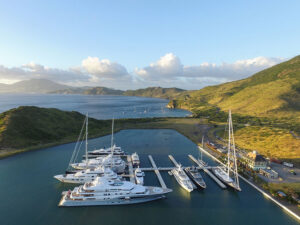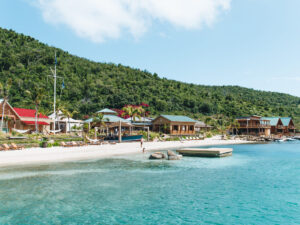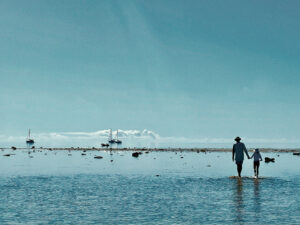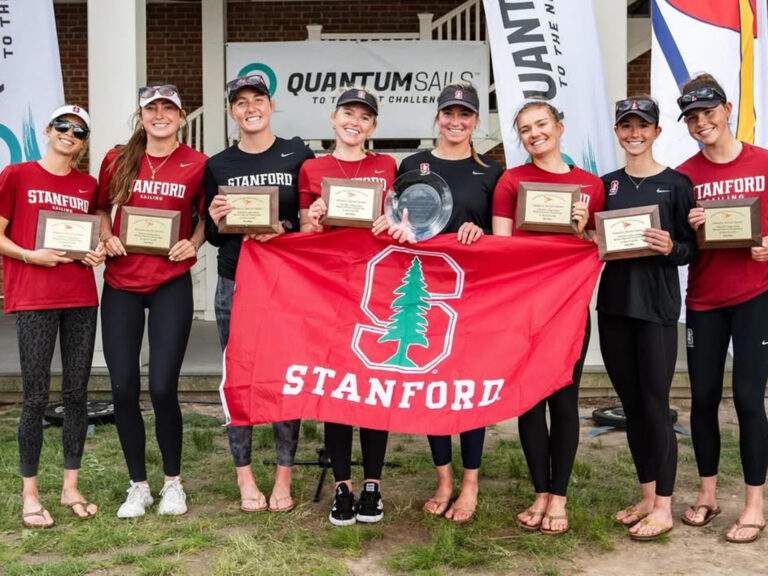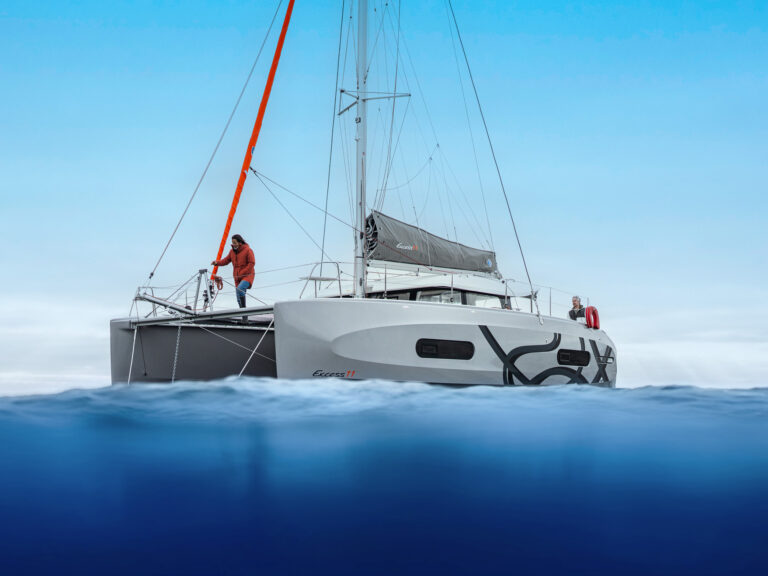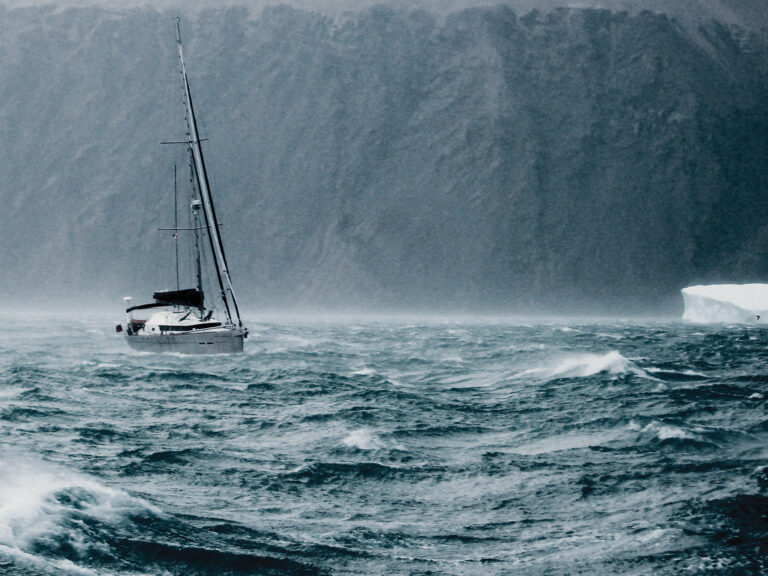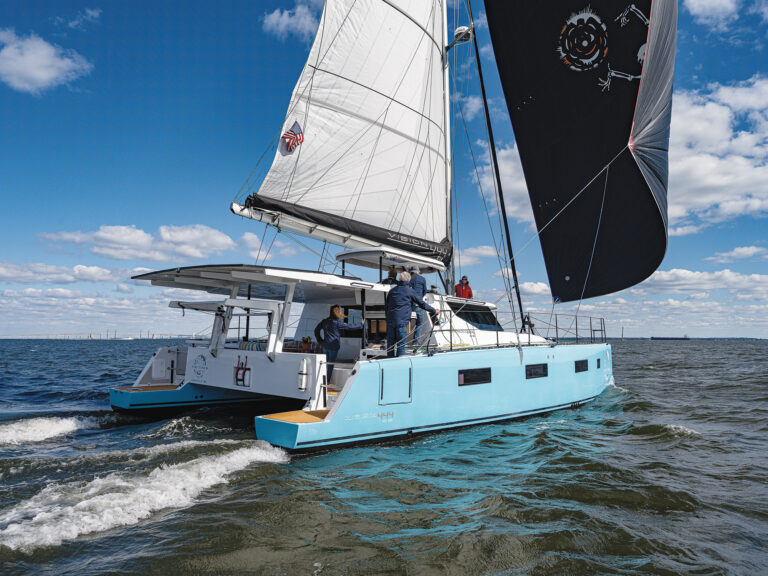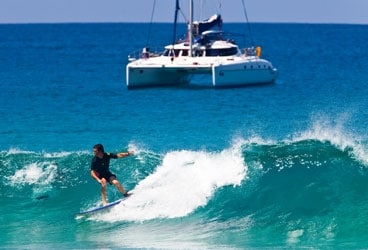
culebra 368
The question posted to an online forum was a simple one: Someone asked whether he’d score any surf while vacationing on Culebra, a small island off the U.S. territory of Puerto Rico.
“There is no surf,” was the terse response from someone posting as Captain J. Guzman.
Señor Guzman might’ve been ill-informed about the scrappy island’s wave-riding potential, but I suspect he was doing what any local surfer would do to conceal his secluded surf breaks from pale-skinned Yankee poachers.
Either way, in my hunt for a Caribbean surf-and-sailing destination, I didn’t put any faith in Guzman. I was in the exploratory stages of planning a bareboat charter that would deliver four middle-aged, lifelong surfing buddies, and a support team of three, to a week of warm-water wave riding. This was the trip we’d talked about for years, and we finally had the wherewithal and the gumption to pass the kids off to grandparents and spouses.
But selecting a charter destination that has both quality surf and serene anchorages isn’t easy. The South Pacific Ocean’s legendary reef breaks would’ve been ideal, but such a trip was simply too far and too expensive. It had to be closer to home. Despite a complete lack of credible surfing footage or first-hand accounts, we settled on Culebra, which sits smack between Puerto Rico and St. Thomas, in the U.S. Virgin Islands. It was a surf gamble, yes, but the bigger the bet, the bigger the payoff.
The neighboring British Virgin Islands have some of the most consistent Caribbean surf breaks, consistent surf, admittedly, being a relative thing in the Caribbean. The territory’s reputable spots are densely populated in the prime winter season, when the north swell kicks up. And the more I studied Culebra-cruising guides, charts, Google Earth, you name it-the more I was convinced that Guzman was full of it.
Three exposed, reef-rimmed bays on the island’s northern coast are like open arms to North Atlantic Ocean ground swells. And there’s the virtually unspoiled islet of Culebrita lying just east of the main island. According to the charts and Google Earth, Culebrita had exactly what we wanted: a shallow cove flanked by wave-friendly reef passes. How could we possibly go wrong?
Knowing full well that we could get skunked-getting no surf at all-I took a leap of faith and gave Culebra the green light. The rest of the surfing crew-Bryan, Rick, and Oscar, all childhood buddies bred of the coldwater surf of Rhode Island-bought my pitch. We booked a seven-day bareboat charter with hopes of proving Guzman wrong.
There are no major bareboat-charter operations currently in business on Culebra or nearby Vieques; I’m told the bareboat-charter industry hasn’t yet followed through on incentives put forth by the Puerto Rican government to set up shop on Culebra. And while there are some smaller, reputable charter operations operating out of eastern Puerto Rico, my search led me to CYOA Yacht Charters in St. Thomas. With slightly more stringent skill-level requirements than for a B.V.I. charter, and with special permission, CYOA allows its customers to take a right turn out of its base to avoid the trodden B.V.I. route and explore the Spanish Virgin Islands to the west. We were duly warned in our charter contract, however, that if we went to Culebra, we’d be on our own.
From CYOA’s fleet of cats and midsize monohulls, CYOA’s founding proprietor, John Jacobs, handed us the keys to his fleet’s flagship, a 2007 Fountaine Pajot Bahia 46 catamaran that sleeps eight comfortably. The big cat Blown Away was the far better surf-safari platform than any monohull could ever be. It was like upgrading from a VW bus to a doublewide RV and hitting California’s Pacific Coast Highway. There was room for all the surfboards and elbowroom at the dinner table for us all.
CYOA’s base in Charlotte Amalie is a perfect stepping-off point for Culebra. Because it’s serviced by major airlines with jumbo jets, you avoid the hassles of commuter connections and ferries, and most important for traveling surfers, there’s a better chance of surfboards arriving with you.
Culebra itself is less than 20 miles west of St. Thomas, and the passage there is typically easy thanks to the trades and currents at your back. The return, however, can be a long and brutal slog-or so I’m told by a few sailors who’ve endured the passage. Culebra’s peaks are visible from St. Thomas, and getting there is line-of-sight, obstacle-free sailing.
We were intent on getting off the dock and out of the harbor at Charlotte Amalie as quickly as humanly possible, so we arrived for the sleepaboard, and then, on the first day of our charter, we got our provisioning out of the way (see “Rent the Car in St. Thomas,” page 47), slipped our lines by midmorning, and were snorkeling off Saba Island by lunchtime. We were on the hook in time for sunset in Brewers Bay, in the lee of the main runway of St. Thomas’ Cyril E. King International Airport. By early morning, we were en route to a place that Don Street aptly describes in his guide as “beating the British Virgin Islands 16 ways to Sunday.”
That old salt has seen his share of paradise, so this is high praise. And what my crew and I soon witnessed is that wise ol’ Street is spot-on about Culebra.
While many a charterer initially sets out with an ambitious route of day stops and excursions, ours was to circumnavigate Culebra until we found something remotely surfable. If we got skunked, we’d snorkel, or hike (the place is essentially one big wildlife refuge managed by the U.S. Fish and Wildlife Service), or fill our days with beachcombing, napping, swimming, and reading-all the many soulful diversions that make a bareboat-charter vacation what it is.
But as luck would have it, we didn’t need any other diversions. By the grace of some divine surfer dude, we were playing in picture-perfect waves every day. Lo siento, Capitán Guzman, there is surfing in Culebra, and it’s excellent.
At the onset of our charter, a gigantic low-pressure system bombed off the mid-Atlantic coast, sending neatly organized swells rolling southward to the Caribbean. Another big storm was cued up right on its heels, and the online surf reports were full of glowing forecasts. The bilingual high-surf advisories crackling over the VHF each morning were music to our ears.
But the lucky swell was only half of our surf-divinity intervention. Offshore winds shape waves into peeling cylinders. Onshore winds turn them to slop. And easterly trades are what sway Culebra’s palms, which would typically mean sloppy surf. The wind indicator at the top of our cat’s rig, however, never went north of 100 degrees, and 200s were the norm the entire week. That’s offshore winds, folks. We couldn’t believe our luck.
As we made the light-air passage to Culebrita on our first day, we could feel the energy in the ocean, and the reef pass into a cove on the island’s northwestern side gave us our first serving of what would be a veritable surfing feast: a quick-breaking wave crashing across a shallow reef. It was “sketchy,” we all later agreed, each of us bearing scrapes and nicks, but it was a session nonetheless. It was a start.
The following morning, with building seas running upward of 15 feet, we set sail and explored the northern coast of Culebra and its three distinct bays-Bahía Marejada, Bahía de Oleaje, and Bahía Flamingo-but the anchorages were untenable, so we ran for cover along the western lee shore, intent on returning the following day if the seas settled. But as we turned south around Punta Noroeste, the rhythmic rise and fall of our transom as swells passed beneath our hulls encouraged us to keep the binoculars working. We began searching for surf where we never thought it would be.
Farther south, where a short peninsula, Punta Tamarindo Grande, juts into Canal de Luis Peña, we could see swell smashing against the craggy coastline with veils of white spume cascading down the headlands. And then, there it was, a surprise discovery: a quick-breaking wave that peeled across the palm-lined beach on the peninsula’s northern side. On the opposite side of the peninsula, we discovered nearly a dozen moorings free for the taking. Only one was occupied. We bridled ourselves to the tackle, paddled 50 feet to shore, walked a short sandy trail to the other side, and happily gazed upon our second day of surfing. Thankfully, this one came with fewer coral heads. We surfed for hours, basking in our luck and our solitude.
As we settled in for the night on our mooring, Rick couldn’t put down the binoculars. He was fixated on the action he was seeing along the shores of Cayo de Luis Peña, a rugged parcel of the wildlife reserve. He swore that he could see at least three different point breaks with their distinctive curls. The next morning’s mission was obvious.
He was right. Lit by the soft morning sun, pale-blue waves peeled across a few small coves. To be sure that coral wasn’t mere inches below the surface, we doused our sails and hovered nearby, dispatching Rick, our resident guinea pig. We passed on two potential breaks, but the third offered exactly what we needed. This one was a fast-breaking righthander in crystal-clear water, which made it far easier to see the coral heads. With the cat anchored in 15 feet just off the break, we waxed our boards and slipped into Day Three, still alone.
Take that, Guzman.
We surfed until we could no longer paddle and had to leave enough time for the relaxing beat southeast through Canal de Luis Peña, a scenic and open waterway void of any traffic-only one other cat, in fact. We passed countless small and appealing bays with free moorings, but our destination was the main harbor of Ensenada Honda and the Culebra capital of Dewey, where we’d shake out our sea legs, hit the scrumptious Mamacita’s for dinner, collect our souvenirs, and restock our ice.
Having paid our visit to Dewey, we were encouraged by the online surf reports to return to the north coast to give it another shot with the arrival of the second swell. The swells were down to a respectable seven to 12 feet, the skies blue, and temperatures in the mid-80s F, with the winds still out of the south. Our search led us past a few potential stops, but we were keen to check the bays, and one in particular. (As you know, it’s accepted surfer etiquette never to broadcast the location of a good surf break.) Once we arrived off the long, desolate, beach, its beige-colored sand concealed by tall, orange-hued headlands, no guinea pig was necessary. From a quarter of a mile off the beach, we could see the azure crests pitching to shore with veils of spray. I once sketched a scene much like this in a notebook as I daydreamed of surfing perfect waves.
The anchor set instantly in the pure-sand bottom. We left the cat in 25 feet of water, well outside the surf zone. It was this day, the fourth of our trip, that each of us would declare was the finest day of surfing in our lives. We traded waves for the better part of six hours-just the four of us, hooting and hollering with satisfaction after every ride.
I’m sure there was great surfing elsewhere on the island over the next two days-possibly just around the next headland-but we’d found our Shangri-La, and we returned twice more to this very spot. We put in even longer sessions, didn’t stop for lunch, and pushed ourselves until we were slaphappy and our shoulder and back muscles coursed with lactic acid.
And then, even as we passed once more through the reef passage into Culebrita, where we’d spend our final night on charter, we were treated to the sight of waves now breaking on both sides of the cove. To our left was the sort of wave you’d see on the cover of a surfing magazine. Exhausted, I couldn’t bring myself to paddle into another wave, but Bryan did.
Just as, a few days earlier, he’d caught the first wave, now he’d catch the last, alone in this gem of a Caribbean destination. As we watched from the dinghy, he paddled his big red board into a heaving crest. His face was illuminated by the orange hues of the setting sun as he hopped to his feet, laid down a deep carve, then glided across the wave face, beaming a huge grin and riding the thing clear into the deep water of the anchorage.
Lifelong surfer and sailboat racer Dave Reed is the editor of Sailing World, CW’s sister publication.

